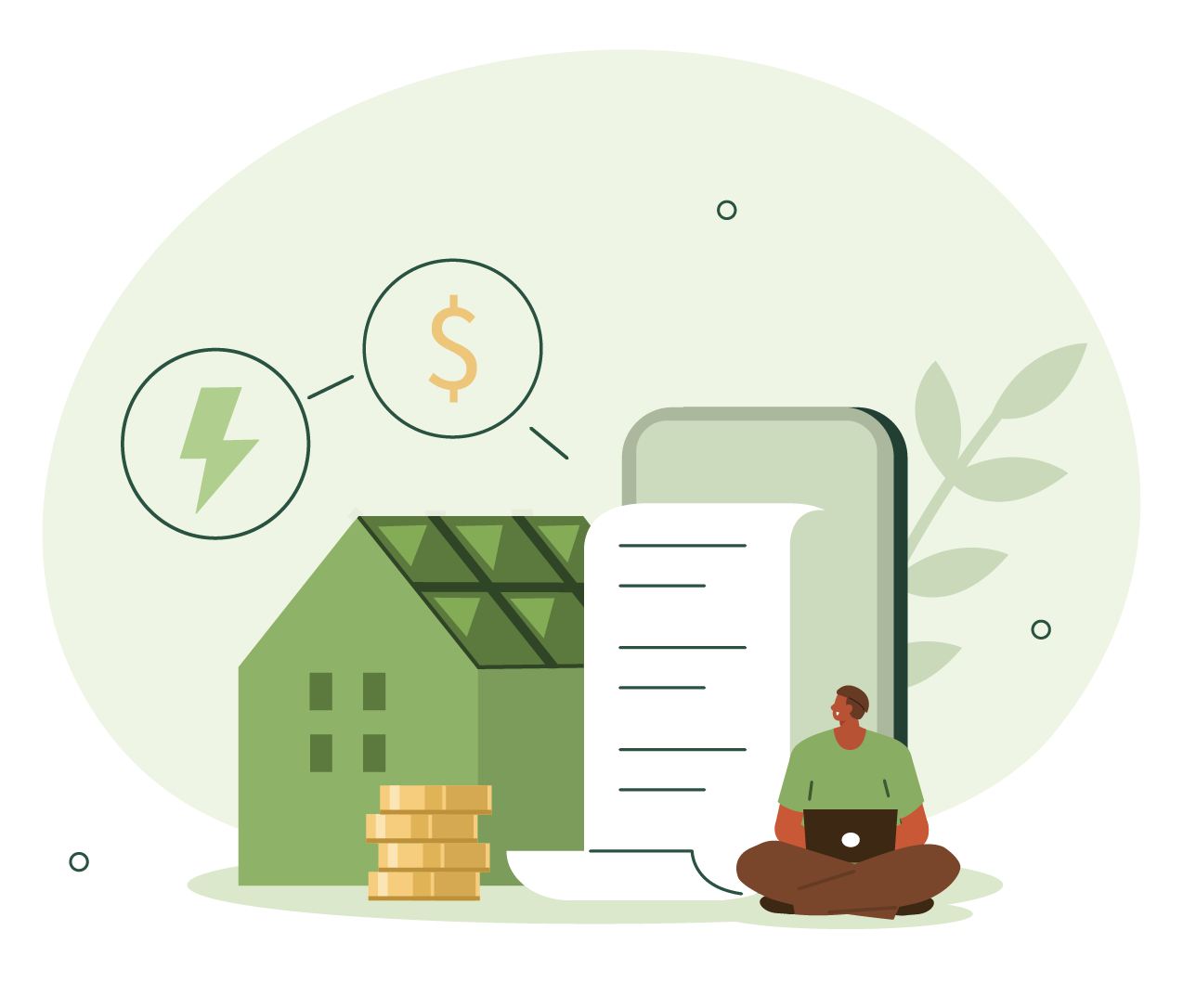Installing residential renewable energy systems, such as geothermal heat pumps and wind or solar energy systems, can save energy, lower utility bills, and earn homeowners money.
Start with Energy Efficiency
Making the home energy-efficient before installing a renewable energy system will save money on electricity bills. Energy-efficiency improvements can conserve energy and prevent heat or cool air from escaping. Homeowners can obtain home energy assessments and install proper insulation, air sealing, and ENERGY STAR®–qualified windows, heating and cooling equipment, kitchen appliances, and lighting systems. Smart water use, available daylight, proper landscaping, and native vegetation can also improve home efficiency.
Incorporate Renewable Energy
Once home energy-efficiency improvements have been made, homeowners are best positioned to consider options for installing a renewable energy system.
-
-
- Buying & Making Electricity
March 14, 2024 -
-
Geothermal Heat Pumps
Geothermal heat pumps, also known as ground source or water source heat pumps, transfer heat into and out of the home, using the ground as both a heat source and a heat sink. These pumps can achieve efficiencies two to three times greater than commonly used air source heat pumps (ASHPs), because they rely on the relatively consistent ground temperatures to transfer heat to or from a home.
Across much of the United States, the temperature of the upper 10 feet of the ground remains between 45°F and 75°F, and often between just 50°F and 60°F. By contrast, air temperatures can range, over the course of a year, from below 0°F to over 100°F. Geothermal heat pumps are long-lasting and durable, and specially equipped systems can also supply hot water during the summer. While purchasing and installing a geothermal heat pump costs more than installing an ASHP system with similar capacity, the additional costs can be recouped through energy savings in 10 to 15 years compared with ASHPs.
Solar Water Heating
Solar water heaters use sunlight to heat water for the home. Solar water heating systems use insulated storage tanks and solar collectors to capture and retain heat from the sun, and heat circulating water. Solar water heaters require a backup system, such as conventional hot water heaters, when there is insufficient sunlight.
-
-
- Saving Electricity
- Water Heating
- Solar
July 17, 2024
Solar Energy Systems
Solar photovoltaic (PV) systems convert sunlight into electricity. Solar energy can generate all or some of a home’s electricity needs, depending on the number of solar panels used, and can heat water as well. With ample sunlight, PV systems can harness energy in hot and cold climates.
The basic building block of a PV system is the solar cell. Multiple solar cells form modules called solar panels that range in output from 10 to 400 watts. Panels are designed to survive storm and hail damage and are resistant to degradation from ultraviolet rays. They are highly reliable and require little maintenance.
Panels are typically grouped together on a building rooftop or at ground level in a rack to form a PV array. The array can be mounted at a fixed angle or on a tracking device that follows the sun to maximize sunlight capture.
Wind Energy Systems
Small residential wind energy systems can generate all or some of a home’s electricity needs (if sufficient land area and average wind speeds are available) and can be integrated with solar and battery storage to provide emergency backup power.
Wind turbines use the motion of the wind to turn a shaft attached to a generator, which makes electricity. The size of the turbine and the speed of the wind determine how much electricity it will make. Typical residential wind energy systems have power ratings ranging from 5 to 30 kilowatts.
To be a suitable candidate for a wind system, a homeowner should have at least one acre of land and live in an area that has an average annual wind speed of at least 10 miles per hour. The turbine tower height should be selected based on the height of nearby wind obstructions, such as buildings or vegetation, and are typically 60 to 140 feet high.
Estimated Costs
Federal and state incentives can significantly reduce the upfront costs of installing a renewable energy system. The Database of State Incentives for Renewables & Efficiency can help homeowners find incentives near them. Plus, renewable energy systems can pay for themselves over time. Grid-connected solar and wind systems are particularly cost-effective because excess electricity is sent back to the power grid and can earn homeowners direct rebates or credits from local utility providers.
- Solar PV systems cost about $3 per watt installed. A 7,000 watt (7 kilowatt) system therefore costs about $21,000 to install. Such a system would provide 20 to 35 kilowatt-hours of electricity per day, depending on climate, and could meet most of a household’s demand.
- Solar hot water systems can meet 50% of the hot water needs for a family of four and generally cost between $5,000 and $7,000 to install.
- Small wind energy systems cost an average of $5 per 120 kilowatts to install. Purchasing and installing a system can range from $10,000 to $70,000, depending on local zoning, permitting, and utility interconnection costs.

Energy Rebates and Tax Credits
Search for rebates and tax credits for home energy upgrades and efficient products
Selling Energy
Many homeowners can sell any excess energy their solar and wind systems produce back to their utility providers and, therefore, pay off their renewable energy investments more quickly. Most states have established “net metering” rules for customers who generate excess electricity through solar, wind, or other systems and feed it into the grid. In net metering, a bi-directional meter records both the electricity the home draws from the grid and the excess electricity the homeowner’s system feeds back into the grid.
Subscribe to receive updates from Energy Saver, including new blogs, updated content, and seasonal energy saving tips for consumers and homeowners.


